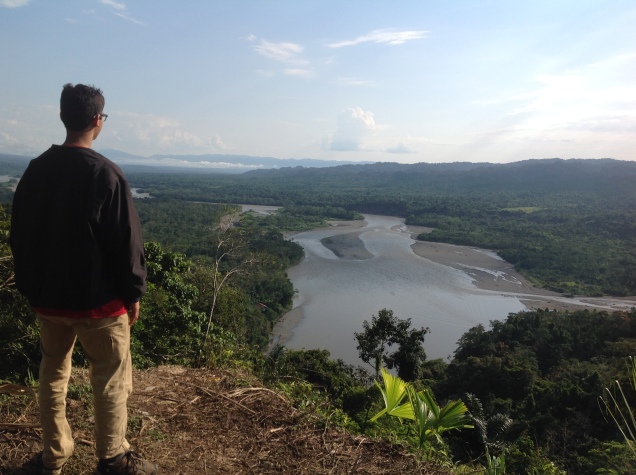Hello again,
I finished my volunteer program in the Peruvian amazon today. During my stay, I had no phone service or internet access so I could not post anything. I am extremely glad that I received this fantastic opportunity and I met some amazing people from different parts of the world.
As I had mentioned earlier, the purpose of my trip to Peru was to volunteer in biodiversityconservation in a section of the Manu Biosphere Reserve, which is a UNESCO World Heritage site. This program was organized by an England based organization, Podvolunteer but the projects are led by the CREES foundation which is a non profit organization working for conservation in the Amazon.
For the bus journey, we had to wake up at 4:40 am and leave by 5:30 am from Cusco.
So after an 8 hour long, bumpy yet beautiful bus journey, we reached a lodge in the cloud forest located inside the Manu biosphere reserve. The bus driver earned my respect as the roads were about six feet wide and there was a massive drop at the edge. Furthermore, there were no railings and the roads were not even made of concrete. These were winding, rocky and dusty paths and if another vehicle came from the opposite direction, we had to stop near the edge for it to pass!
On the way, we stopped at several places. One stop was a village named Paucartambo and we visited a museum which displayed the variety of Andean cultures, folklore and ancient stories. I loved seeing the people dressed in the gorgeous Peruvian attire. We were in the village for only 30 minutes so I did not get to see everything. This part of the journey reminded me of Tintin and the Picaros!
Once we reached the cloud forest lodge, we had to cross a stream two people at a time on a sort of wooden box tied to ropes. Almost immediately, we were greeted with a variety of bird calls. I saw these exotic and beautiful birds for the first time in my life and was ecstatic. The sounds of a bird called the oropendola were my favorite.
Then we went to see the coco bird, the national bird of Peru, and that made me realize how difficult the life of wildlife photographers can be! Seeing it through the binoculars was an amazing experience and it was definitely one of the most beautiful birds I have ever seen.
The next morning, we left for the Manu Learning Center (MLC) which is surrounded by the lowland Amazon rainforest. This place was a 45 minute motorized canoe ride from a jungle town called Atalaya which in turn was a 2 hour bus ride away from the cloud forest lodge. The boat journeys were truly mesmerizing every single time! Hence, at th MLC, food, electricity and community are arguably the most valued components of life there.

The MLC can be compared to a gigantic living laboratory. Surrounding the beautiful wooden lodges is a secondary regenerating forest with the magnificent Alto Madre de Dios river on one side. The secondary forest is divided into three regions namely Partially Cleared Regenerating (PCR), Selectively Logged Regenerating (SLR) and Clear Cut Regenerating (CCR). In th 1950-60s, the former primary forest was converted to agricultural lands and selectively logged but then it was bought and it is currently a 643 hectare privately owned property managed by the CREES foundation for research purposes. I am grateful to have had the opportunity to work with the members of CREES on various surveys for biodiversity conservation and play a direct role in the projects. I definitely learnt more than I expected from this experience.
I will write a detailed blog on all of my activities with CREES within the next two weeks as I am off to Ecuador at the moment. In fact, I am typing this while waiting to board the plane to Quito. I apologize for leaving you hanging.
